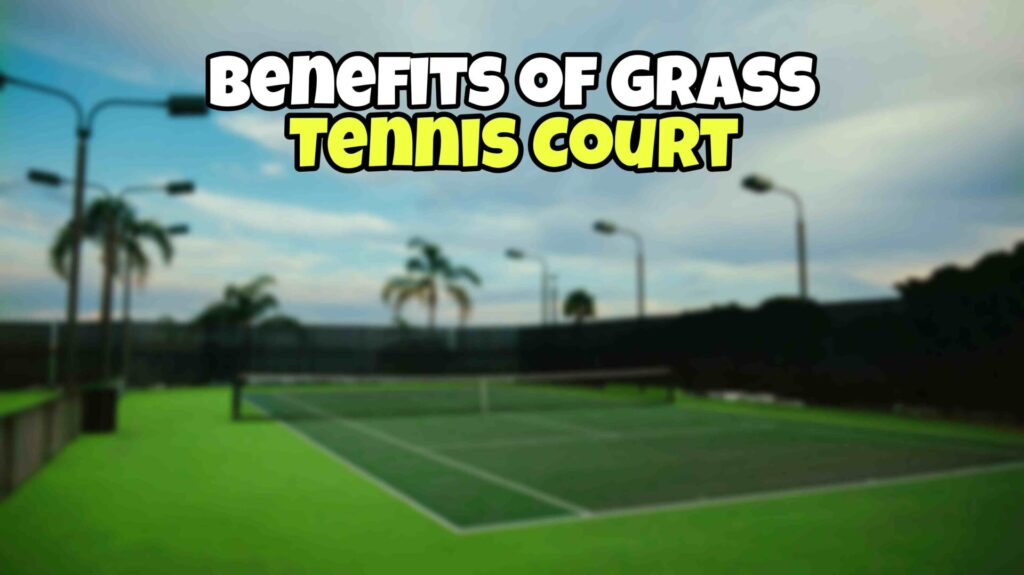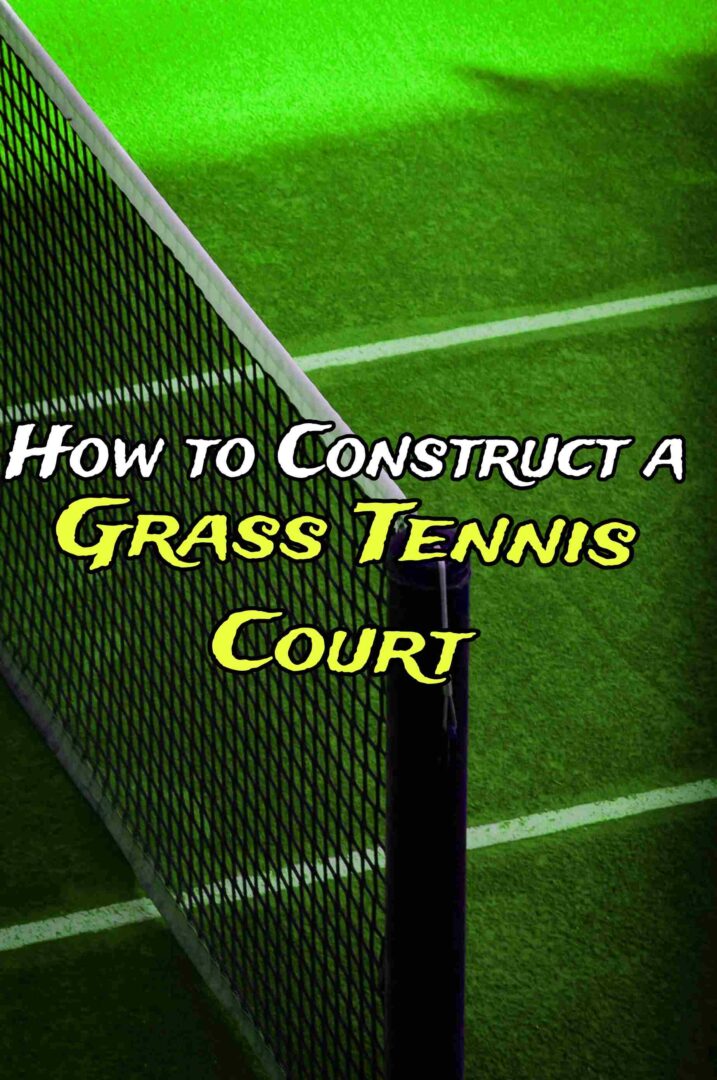How to Construct a Grass Tennis Court
Introduction
Building a grass tennis courtroom is an bold mission that blends the art of landscaping with the precision of tennis court construction. Grass courts are loved for his or her specific gambling surface, which permits for a distinct fashion of play with a quicker sport and a softer leap in comparison to difficult or clay courts. This manual affords a complete step-by means of-step technique to constructing a fantastic grass tennis courtroom that meets expert standards.
Benefits of Grass Tennis Courts

Aesthetic Appeal
Grass tennis courts are renowned for his or her traditional and elegant look. The lush inexperienced surface now not only complements the visual attraction of a property but also adds a touch of conventional appeal this is often related to prestigious tennis tournaments.
Playing Characteristics
Grass courts provide a unique playing revel in. The ball’s jump is usually decrease and much less predictable, which could desire gamers with sturdy serve-and-volley competencies. The softer surface additionally affords a extra forgiving revel in for gamers joints.
Maintenance Considerations
While grass courts require more preservation in comparison to hard or clay courts, their natural splendor and gambling characteristics cause them to worthwhile. Regular protection ensures the court stays in best condition at some stage in the season.
Planning and Preparation
Site Selection
Selecting the right site is crucial. Choose a location that offers good sunlight exposure, adequate drainage, and minimal interference from surrounding structures. Ensure the area is large enough to accommodate the full dimensions of a tennis court.
Legal and Environmental Considerations
Check with local authorities to ensure you meet any legal and zoning requirements. Additionally, consider any environmental impacts of your construction, including potential effects on local wildlife and vegetation.
Designing Your Tennis Court
Court Dimensions
A standard tennis court measures 78 feet by 36 feet. The design should include appropriate spacing around the court for player movement and safety.
Surface Drainage
Effective drainage is essential to prevent waterlogging and maintain the court’s playability. Plan for a slight slope to direct water away from the court and install drainage systems if necessary.
Fencing and Surroundings
Install fencing around the court to keep the ball within play and to ensure the safety of players. Surrounding the court with landscaping can enhance its appearance and provide additional privacy.
Ground Preparation
Clearing the Site
Begin by means of clearing the website online of any particles, rocks, and plant life. This initial step is vital for a easy creation manner and guarantees a stable foundation for the court.
Excavation and Leveling
Excavate the area to the specified depth and make certain the ground is leveled well. This step is vital for the stableness of the courtroom and to save you choppy floor problems.
Soil Testing and Preparation
Conduct soil tests to determine the soil’s composition and drainage homes. Based at the outcomes, amend the soil as had to support wholesome grass increase.
Building the Base
Sub-Base Construction
Create a sub-base using crushed stone or gravel. This layer supports the court surface and aids in drainage. Ensure it is compacted well to provide a stable foundation.
Installing the Base Layers
Install additional base layers such as sand or a specialized base material to create a smooth and even surface. Each layer should be compacted thoroughly to prevent future settling.
Laying the Grass
Choosing the Right Grass Type
Select a grass variety suited for your climate and the specific demands of a tennis court. Common choices include perennial ryegrass or Kentucky bluegrass, known for their durability and aesthetic appeal.
Sod Installation
Lay sod in a staggered pattern to ensure a seamless look and good root development. Ensure the edges of the sod pieces fit closely together to prevent gaps.
Seeding Techniques
If opting for seeding instead of sod, use a high-quality grass seed mix and follow recommended seeding rates and techniques. Ensure proper watering and care to promote healthy grass growth.
Court Surface Installation
Leveling and Compaction
Once the grass is laid, perform leveling and compaction to ensure a smooth and even surface. Use a roller to help the grass settle and remove any air pockets.
Rolling and Smoothing
Regularly roll and smooth the court surface to maintain its quality. This step helps to create a uniform playing area and prevent uneven patches.
Installing Court Fixtures
Net Posts and Net
Install net posts at the correct height and ensure the net is taut and centered. This setup is essential for proper play and adherence to official tennis regulations.
Line Markings
Use chalk or paint to apply the court lines. Ensure they are clearly visible and adhere to official tennis court dimensions for accuracy.
Post-Construction Maintenance
Watering and Fertilizing
Regular watering and fertilizing are crucial to maintain the grass wholesome and vibrant. Adjust the watering time table based on climate situations and grass needs.
Mowing and Weeding
Maintain the court docket by means of mowing the grass frequently and controlling weeds. Proper care facilitates to maintain the court’s playability and aesthetic.
Troubleshooting Common Issues
Drainage Problems
If you encounter drainage issues, check for any blockages and ensure the slope of the court directs water away. Consider installing additional drainage solutions if necessary.
Grass Health Concerns
Address grass health issues promptly, such as patches or diseases. Regularly inspect the grass and apply appropriate treatments to maintain its condition.
Professional Tips for Success
Hiring Contractors
Consider hiring experienced contractors for parts of the construction, especially if you lack the expertise or equipment. They can ensure high-quality results and adherence to standards.
Regular Inspections
Perform regular inspections of the court to catch any issues early and ensure ongoing maintenance. This proactive approach helps to keep the court in optimal condition.
Conclusion
Constructing a grass tennis courtroom is a profitable project that combines technical precision with aesthetic appeal. By following this precise guide, you may create a lovely and purposeful courtroom that complements your private home and affords an fantastic playing experience. Regular protection and careful making plans are key to ensuring the sturdiness and time-honored normal performance of your grass tennis courtroom.
FAQs
1. How long does it take to build a grass tennis court?
Building a grass tennis court typically takes three to six months, depending on factors like weather conditions and the scale of the task.
2. What is the best grass type for a tennis court?
Perennial ryegrass and Kentucky bluegrass are famous alternatives due to their durability and suitability for tennis court docket use.
3. How often should I water the grass on my tennis court?
Water the grass 2-3 instances per week, adjusting based totally on climate situations and grass desires to hold gold standard health.
4. Can I build a grass tennis court myself?
While it is viable to construct a grass tennis court docket yourself, it is encouraged to lease experts for particular production and high-quality effects.
5. What are common issues with grass tennis courts?
Common issues include drainage problems, uneven surfaces, and grass health concerns. Regular maintenance can help address these issues effectively.






